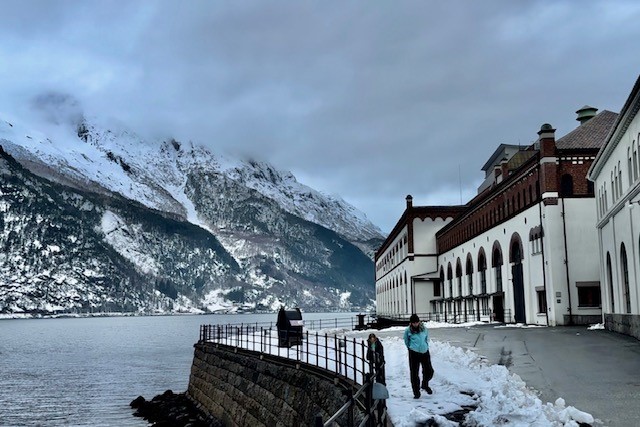Introduction:
This winter, I had the privilege of experiencing Norway, a country renowned for its majestic landscapes and remarkable commitment to sustainable energy. Norway’s journey in harnessing hydroelectric power is not just inspiring but a testament to human ingenuity and respect for nature. The heart of this legacy can be experienced at the Norwegian Museum of Hydropower and Industry in Tyssedal, near the scenic town of Odda – a location fans of the Netflix show Ragnarok might find familiar.
A Dive into History:
My visit allowed me to delve deep into the bowels of Tysso 1 and 2, witnessing the strides taken in Norwegian hydroelectric power. Tysso 1, completed in 1908, initially powered arc furnaces for the carbide factory in Odda, which was vital for Great Britain’s coal mines providing the materials for the acetylene gas lamps. This project, funded by the British Sun Gas Company, marked a leap in industrial-scale hydroelectric power in Norway, boasting a capacity of 100MW and generating an impressive 700GWh annually by 1918. The facility, once the largest in Europe, was a cornerstone for local cyanamid, zinc, and aluminium industries.

Architectural Marvel and Technological Feats:
The architecture of the power stations, crafted by Thorvald Astrup and Victor Nordan, stands as a testament to Norway’s ability to blend industrial innovation with aesthetic beauty, regarded as one of the most beautiful industrial buildings in the nation. The technical feats of Tysso are impressive. Water channelled through mountains from a large damn and then down a 410m drop through German pipes, varying in thickness (7mm to 35mm) to withstand extreme pressure, fed 15 Pelton turbines. This system, integrated equipment from Westinghouse in the UK, Swedish and Norwegian manufacturers Verkstaden of Kristinehamn and Kvaerner Brug. However, time took its toll, and by 1989, after a significant infrastructure failure, production eventually stopped.




Modern Continuation:
Adjacent to the historical site, the Oksla Hydroelectric Power Plant represents the modern era of Norway’s hydroelectric journey. Owned by Statkraft and utilizing a 465-meter drop from the Ringdalsvatnet resevoir, Oksla’s single Francis turbine, with a 210 MW capacity, exemplifies the continued evolution and dominance of hydro power in Norway, producing over one TWh per year.
Global Connection:
Norway’s hydroelectric journey doesn’t just power local industries and homes; it has global implications. Since 2021, the 1.4GW North Sea Link has been operational, allowing the UK to access low carbon electricity, symbolizing a shared commitment to sustainable energy and highlighting the interconnectedness of our modern world.
Conclusion:
Norway’s relationship with hydroelectric power is a world renowned. The legacy of Tysso and the ongoing contributions of plants like Oksla are not merely historical footnotes but living chapters in the ongoing story of renewable energy. As we move forward into an era where sustainable power is not just preferred but necessary, Norway’s hydroelectric story offers inspiration for a cleaner energy future.

